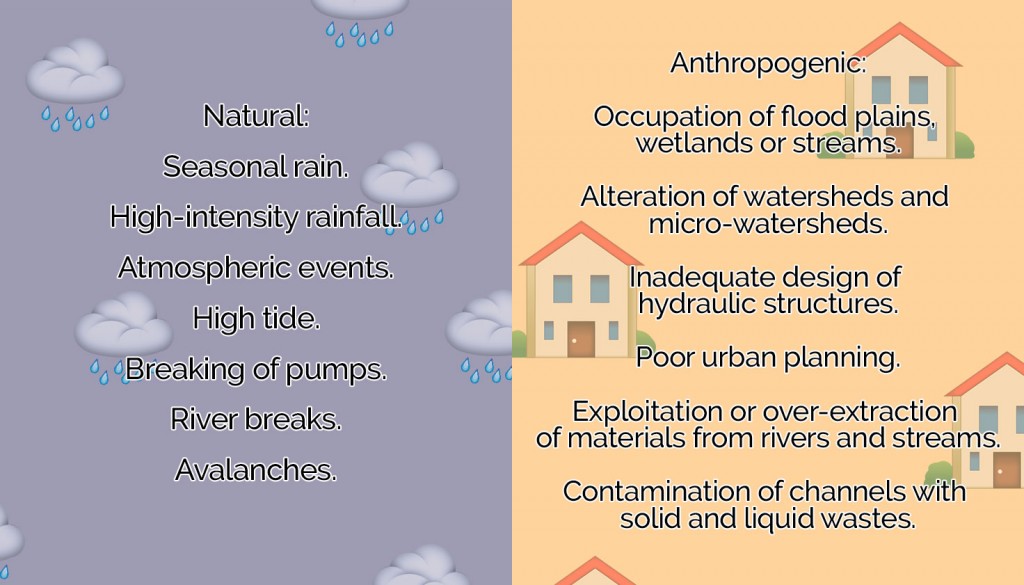Facing the flood
During the last couple weeks, heavy rains and flooding across Costa Rica have been battering nearly all corners of the tropical country. Government agencies are inventorying material damages and addressing national highways that remain without passage, in addition to coordinating efforts around missing persons and three casualties.
Weather has grown more peculiar. A whopping 150 percent of Costa Rica’s average September rainfall struck last month.
“In the case of San José, 49 percent more rain has fallen than usual – plus 40 percent more in Pavas, 24 percent more in Alajuela and 57 percent more in Los Chiles, for example. It should be noted that Cartago has an average September rainfall of 211 liters per square meter. In just five days, it had already reached 200,” said Juan Carlos Fallas of Costa Rica’s National Emergency Commission (CNE).
This situation has caused nearly 500 incidents of flooding and landslides – forcing people out of their homes and into shelters. In addition, the CNE declared a red alert for five regions – including the entire area surrounding EARTH University’s La Flor campus – and a yellow alert for Huetar Caribe – the region where EARTH’s Guácimo campus resides.
Global warming and pollution
Floods are fed by prolonged heavy rains, such as those of tropical storms and hurricanes, coupled with other issues, such as underperforming sewers or destroyed wetlands. In other words, heavy rains can become exceedingly dangerous when combined with decades of human error.
Numerous human actions have made populated areas increasingly vulnerable to the devastating effects of increased rainfall. Not to mention, many human actions are contributing to the increasing appearance and magnitude of otherwise natural phenomena.
Global warming intensifies floods. Human emissions of greenhouse gasses have swollen the likelihood of heavy rainfall and the risk of flooding. More heat equals more energy in the atmosphere and this means more water vapor and activity in the hydrologic system.
In addition, pollution preventing proper drainage through sewers makes the majority of urban settlements in developing countries suffer the worst consequences. This problem in particular can be avoided with more citizen education about reducing consumption of single-use items (especially plastics) and learning how to correctly reuse or recycle.
Click on the image below to read more about the natural and the anthropogenic culprits of flooding:
Weathering the storm
With the help of the CNE and Warner Rodríguez, manager of EARTH’s Agricultural Machinery Support Unit, we bring you this list of recommendations to help mitigate the impact of a flood.
>Long before:
• Investigate whether your property is in a flood zone or if it has suffered flooding previously – especially if you’re planning to build. Are there ample wetlands and working sewers?
• Learn about flood insurance options.
• Support reforestation and wetland protection efforts in your area.
• Properly dispose of rubbish, being sure not to litter rivers and streams.
• Organize cleanups of roads, rivers, ravines and ditches along with neighbors.
• Eliminate existing obstructions in sewers and do not litter or throw garbage in them.
• Petition the government and local businesses to team up and install better sewers and other anti-flood infrastructure.
>Before:
• Decide if there is a safer place for you and your family to stay for a while.
• Fill jugs with water in case of interruption of drinking water service.
• Identify an evacuation route and alternative routes.
• Stay informed about possible heavy rains, storms and hurricanes.
>During:
• Listen to the radio to remain informed, and follow any instructions from due authorities.
• Suspend electricity, water and gas supplies.
• Evacuate your home for higher ground if the situation warrants it or the authorities so indicate.
• Avoid entering affected areas, and do not approach electrical cables, light poles or overflowing sewers.
>After:
• If you had to leave your home, return only after authorization by the authorities.
• Inspect your home, recording and reporting all damage to piping, electrical wiring, gas tanks and other possessions.
• Boil drinking water if unsure of potability.
• Do not touch electric cables.
• Do not hinder official rescue efforts by heading to affected areas.








